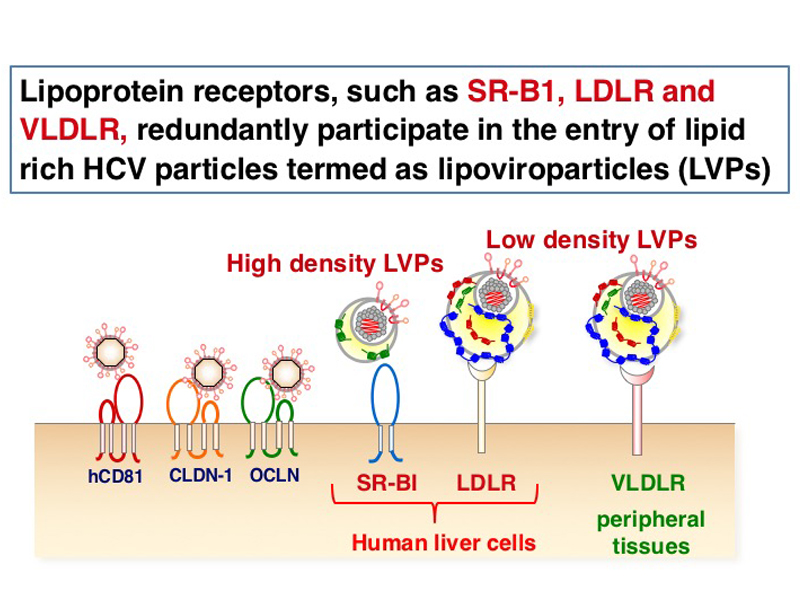PLoS Pathog 12(5):e10056102016/05/06
Hepatitis C virus (HCV) is a major cause of chronic liver diseases such as cirrhosis and hepatocellular carcinoma. HCV particles interact with lipid and apolipoproteins to form complexes known as lipoviroparticles (LVPs). The formation of LVPs is considered to have significant roles in HCV assembly and entry. However, the detail roles of LVP formation in viral life cycle are not yet fully understood. SR-B1 and LDLR, which are abundant in liver, are reported as candidates of entry factor of HCV. We established SR-B1 and LDLR knockout cells by using CRISPR/Cas9 system and demonstrated that SR-B1 and LDLR redundantly participate in entry of HCV. Moreover, we showed that VLDLR has similar roles to SR-B1 and LDLR in HCV entry. In addition, our data indicate that interaction between lipoprotein and lipoprotein receptors are essential for LVPs entry, and these lipoprotein receptors are involved in HCV entry dependently on the density of virion-associated lipoproteins. Current data will be clue to the development of new drug against HCV infection.
Links
- Home
- Achievement
- Research Activities
- PLoS Pathog 12(5):e10056102016/05/06








